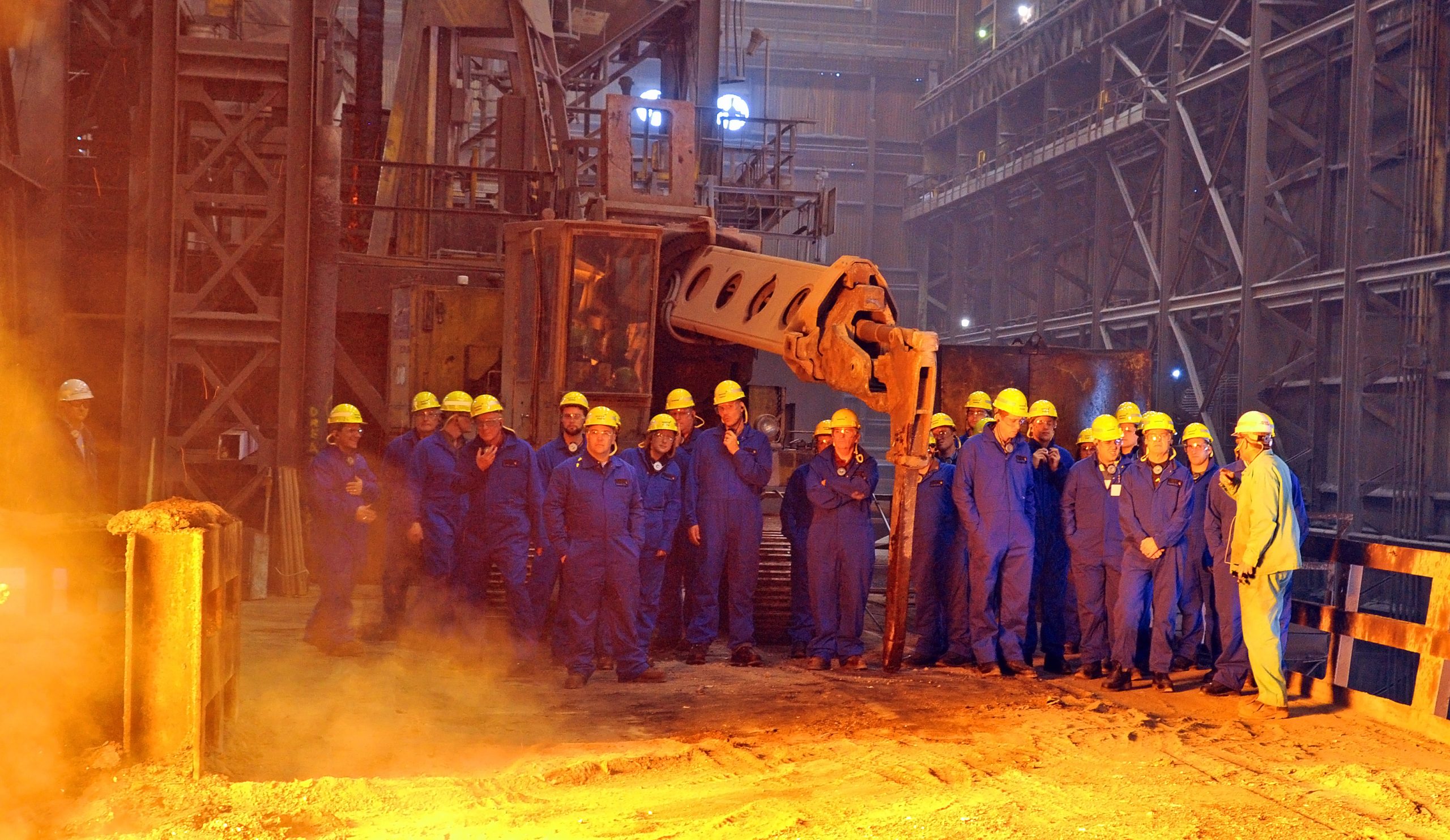Analysis

October 9, 2025
Final Thoughts: AMU brings the news
Written by Michael Cowden
Usually, I write about steel in this column because, well, we’re Steel Market Update. But before I get to steel, I want to give a shoutout to my colleagues at Aluminum Market Update (AMU) – SMU’s new sister publication.
Aluminum news (that impacts steel, too)
AMU’s coverage over the last month of the fire at a Novelis aluminum mill in Oswego, N.Y., has been outstanding. Damage from the fire has big implications for automotive aluminum. Why should steel care? Yes, the body of the F-150 is aluminum. But the chassis remains steel.
News of the fire at Oswego gained the attention of mainstream business publications this week. And it moved markets. But if you subscribed to AMU, you knew about the issue on Sept. 18, two days after the fire happened, thanks to reporting from Stephanie Ritenbaugh. That’s here.
My colleague Nicholas Bell then followed with an in-depth article on Sept. 24. Nick quantified the impact of the Oswego fire on the market. That’s here.
And, on Oct. 6, my colleague Greg Wittbecker – who brings a wealth of industry experience to his writing – reported on the ongoing repercussions of the fire, not only for the automotive market but the beverage can market as well. Greg’s article is here.
Again, if you were following the mainstream business press, you might not have realized what a big impact the Oswego fire was having on the aluminum market until this week.
If you were subscribed to AMU, you would have known about this market-moving news nearly three weeks before the market moved. So, if you’d like to learn more about AMU, give our account senior executive, Luis Corona, a shout at luis.corona@crugroup.com. Or check out the AMU website and take out a free trial.
A slab puzzle
Now back to steel, and to something I expect to hear more about in the not-so-distant future – maybe on an upcoming earnings conference call. Namely, ArcelorMittal Calvert, Cleveland-Cliffs, and U.S. Steel, and the question of where Calvert will source slabs from.
Why do I mention that now? Cliffs said during an earnings conference call back in May that it planned to let an “onerous” slab supply contract with the Alabama mill expire on Dec. 9.
The Cleveland-based steelmaker said the contract accounted for 1.5 million tons of production annually. Cliffs also said it could do more profitable things with those tons – presumably, turning more of them into steel sheet.
Dec. 9 was a long way off in May. Now, with HR lead times standing at 4-5 weeks on average, it’s just around the corner. So, decisions need to be made – and soon.
As you can see from our survey results and from the latest “market chatter,” demand remains in a bit of a funk. Not terrible. But not great either. Basically, not the kind of market that has an obvious need for another 1.5 million tons of sheet.
What Cliffs really didn’t like about the Calvert slab contract was this: It was tied to Brazilian slab prices. They had historically trended closely with US HR prices. But that correlation broke down when the Trump administration replaced Brazil’s Section 232 quota with a 25% tariff. And President Trump doubling the tariff to 50% means that correlation isn’t coming back anytime soon.
The most obvious solution is for Cliffs and Calvert to renegotiate a slab supply contract on better terms for Cliffs. But let’s speculate about some other possibilities.
Remember when U.S. Steel said it would stop processing slabs at the hot strip mill at its Granite City Works in southern Illinois? Granite City got those slabs from the Pittsburgh-based steelmaker’s other integrated mills. Namely, Gary Works in northwest Indiana and Mon Valley Works in (mostly) western Pennsylvania.
Our understanding is that Gary and Mon Valley were shipping something to the tune of 850,000 tons of slabs annually to Granite City. And if USS had idled the Granite City hot strip mill, those slabs could have been used to supply Calvert. But then Trump stepped in with his “golden share,” which means Granite City’s hot strip mill will continue to consume slabs.
On top of that, U.S. Steel plans to do a full reline of the No. 14 furnace, the largest blast furnace at Gary Works. Our understanding is the furnace reline will take at least 10 weeks starting in February. So, there probably won’t be any excess slabs coming from USS.
What about Mexico? I’m not sure whether Calvert could source much from Mexico. As we’ve noted before, ArcelorMittal Mexico is having issues at its mill in Lazaro Cardenas. We’re told they’re importing slabs to make up for lost production. And our understanding is that other Mexican producers don’t have excess slabs available either. I’m not saying there aren’t other international places to source from in a weak market. But tariffs might limit those options.
Which gets us to an interesting possibility. Is there a scenario where U.S. Steel could conceivably restart a furnace at Granite City? We saw it happen after Section 232 tariffs were first announced in 2018. Maybe history will repeat? Or not. Whatever happens, SMU will be watching closely as quarterly earnings season gets underway.
See you in London?
By the way, longtime SMU’er Brett Linton and I will be in London for LME Week and to do some work on both SMU and AMU with our CRU colleagues there.
If any of you will also be in London next week, give me a shout. We’d be happy to catch up in person. I’m at michael@steelmarketupdate.com. Don’t hesitate to drop me a line.
And, in the meantime, thanks for your time and your support of SMU – and AMU too!







